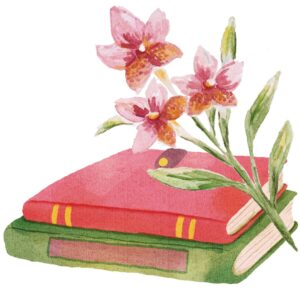Many books (but especially books with morally gray characters) will receive some criticism for being “problematic.” You’ll usually see this word thrown around when a character or general theme of a book could be interpreted as offensive, harmful, or just generally controversial in some way.
But not all flawed characters are problematic. Let’s break it down.
What makes a character flawed?
Flawed characters have imperfections or shortcomings that ultimately make the character more human and relatable. This can include both personality traits or behaviors that are less than admirable or desirable. Sometimes, these characters make bad choices, or even believe incorrect stereotypes.
These things don’t make a character inherently problematic.
So what makes a character problematic?
There’s one key component that makes a character go from flawed to problematic:
Problematic characters never face consequences for their actions.
When characters make questionable choices, or say and do terrible things, but never apologize or change, that’s when we verge on problematic territory. This can actually promote harmful stereotypes, negative attitudes or behaviors, or just generally leave the audience upset. That’s problematic.
These characters never get a true redemption arc, they are never forced to confront their biases or prejudices, and they never apologize. They do bad things, never put in the work to change, and everyone is just okay with it.
The only characters who can get away with this are villains.
Villains are supposed to be problematic.
It’s silly to call a book problematic when its villains behave, well, villainously.
If the evil character kicks a puppy, the author isn’t promoting puppy-kicking. Quite the opposite – in this case, the author is saying that puppy-kicking is something evil people do. That’s an important distinction. (I wish I was picking this as a random example – but it’s actually real, based on a review for a Stephen King novel).
How do our favorite morally gray love interests fit into this?
Romance as a genre is in a league of its own when it comes to bad-guys-turned-love-interests.
I enjoy enemies-to-lovers as much as the next reader. But I still think it’s true that in order for the relationship to progress, our morally gray bad guy still has to work to be better first. They must apologize for their slights, and show real change. That’s my opinion anyway.
To conclude: problematic characters can undermine the story or the reader’s experience.
It’s important to say that what constitutes problematic behavior is entirely subjective, and will vary according to cultural, social, or historical context.
But overall, characters should always change from the beginning to the end of the story. And this is especially true if they’re in need of a redemption arc.
I think a good example of this is Nesta’s arc in A Court of Silver Flames.
Check out some of my other recent blogs:
- Listen for the Lie: Surprisingly engaging
- The Starving Saints: Excellent fantasy horror
- The Bog Wife: Finally, a 5-star read
- April memes
- The Rom-Commers: Mostly good









One response to “Flawed vs. Problematic Characters”
Thanks for your explanation/description of “flawed vs problematic.” Very interesting & I agree 100%.